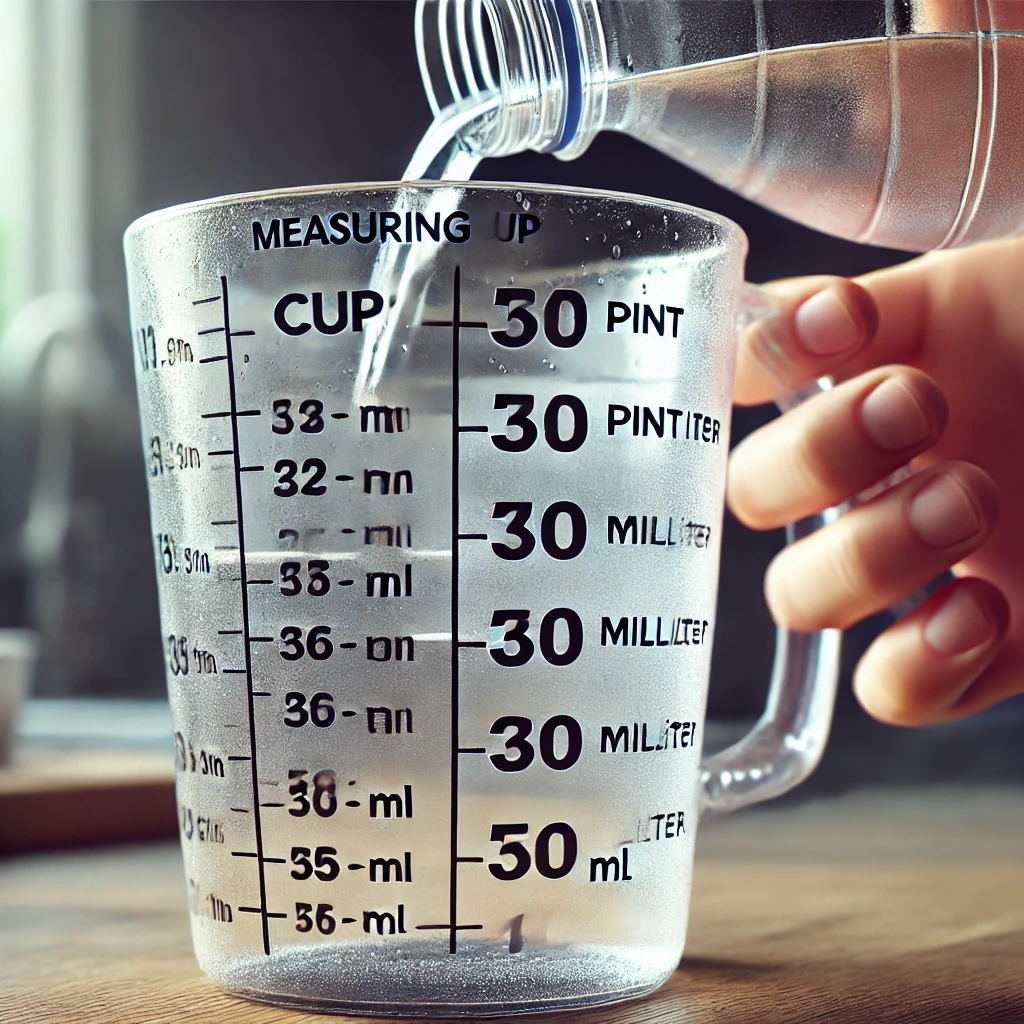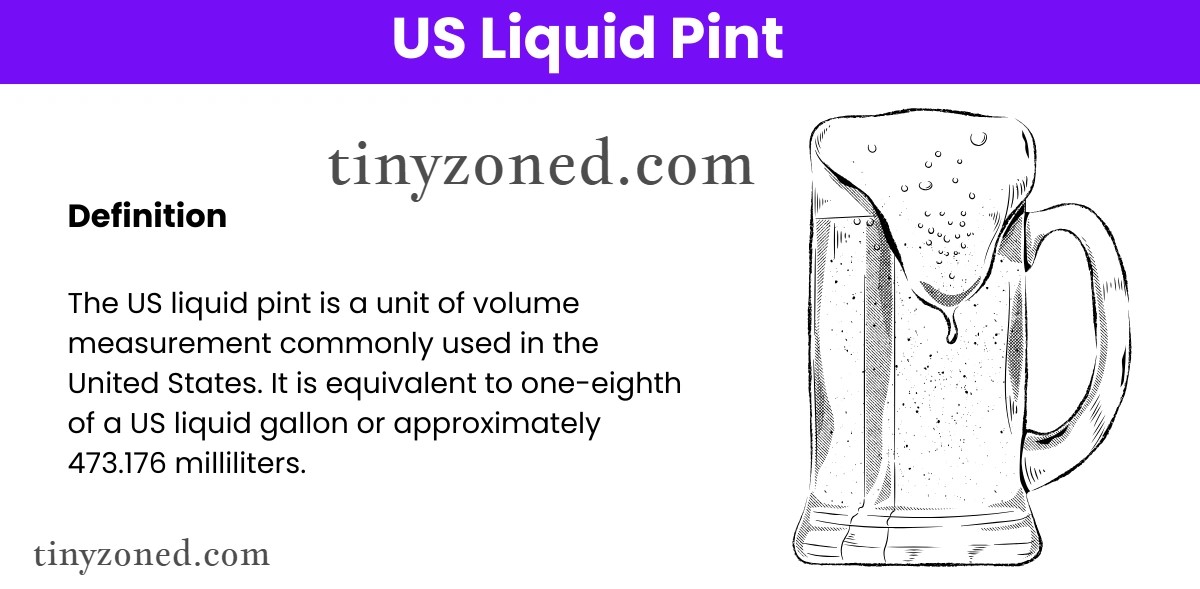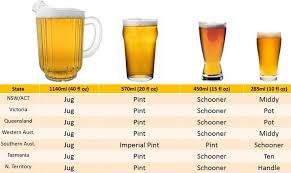How Many ml in Pint – In Detail Guides

A pint is a unit of measurement used to quantify liquid volume, commonly used in the United States and the United Kingdom. Although both countries use the term, their pint measurements differ. In the United States, a pint equals 16 fluid ounces (473.176 millilitres), while in the United Kingdom, an imperial pint is slightly larger, measuring 20 fluid ounces (568.261 millilitres). Pints are widely used in everyday life, How Many ml in Pint especially when measuring beverages like milk, beer, or juice.

For example, when visiting a pub in the UK, it is common to order a pint of beer, which means you will receive a glass containing 20 fluid ounces of beer. However, if you order a pint in the US, you will get a slightly smaller portion of 16 fluid ounces. Similarly, in grocery stores, milk and ice cream are often sold in pint-sized containers, making it easier for consumers to measure and purchase the right quantity. Whether you’re enjoying a cold pint at a bar or measuring ingredients for a recipe, understanding the difference between the US and UK pint can be helpful in everyday situations.
Comparison of U.S. and Imperial Pints
| Measurement System | Volume in Milliliters (ml) | Equivalent in Liters (L) | Fluid Ounces |
|---|---|---|---|
| U.S. Liquid Pint | 473.176 ml | 0.473 L | 16 fl oz |
| U.S. Dry Pint | 550.61 ml | 0.551 L | – |
| Imperial Pint | 568.261 ml | 0.568 L | 20 fl oz |
As seen in the table, the U.S. liquid pint is smaller than the imperial pint, while the U.S. dry pint is slightly larger than the U.S. liquid pint.
Why Do Different Pints Exist?

The variation in pint measurements originates from historical differences in measurement systems. The U.S. customary system was derived from British measurements before standardization. In contrast, the imperial system was later refined in the U.K. How Many ml in Pint – In Detail Guides The differences persist today, leading to separate definitions for pints in different regions.
Conversion Guide: Pints to Milliliters
Understanding the conversion between pints and milliliters is essential due to differences in measurement systems across various regions. The two most commonly used pints are the Imperial Pint and the US Pint, each having distinct capacities. The Imperial Pint, primarily used in the UK and some Commonwealth countries, is equivalent to 568 milliliters (ml). In contrast, the US Pint, which is standard in the United States, holds 473 ml, making it slightly smaller than the Imperial version. Additionally, there is the US Dry Pint, which is used for measuring dry goods such as fruits and grains and has a capacity of approximately 550 ml. These variations arise from historical differences in measurement standardization, with the US retaining an older system while the UK adopted the Imperial standard in 1824. The following table provides a quick reference for converting pints to milliliters:
Pint to Milliliter Conversion:
| Type of Pint | Equivalent in Milliliters (ml) |
|---|---|
| Imperial Pint (UK, Canada, etc.) | 568 ml |
| US Fluid Pint | 473 ml |
| US Dry Pint | 550 ml |
When converting pints to milliliters, it is important to identify the specific type of pint being used to ensure precise measurements. This is particularly crucial in industries like cooking, brewing, and international trade, where accuracy plays a significant role.
Liquid Conversions:
| Pints | U.S. Liquid (ml) | Imperial (ml) |
| 1 | 473.176 | 568.261 |
| 2 | 946.352 | 1136.522 |
| 3 | 1419.528 | 1704.783 |
| 4 | 1892.704 | 2273.044 |
| 5 | 2365.88 | 2841.305 |
Dry Pint Conversion (U.S. System):
| Pints | Milliliters (ml) |
| 1 | 550.61 |
| 2 | 1101.22 |
| 3 | 1651.83 |
| 4 | 2202.44 |
| 5 | 2753.05 |
Difference Between U.S. Pints and Imperial Pints

Pints are a common unit of volume used in both the United States and the United Kingdom, but they differ in size due to historical differences in measurement systems. The U.S. Pint and the Imperial Pint are not interchangeable, making it essential to use the correct measurement depending on the country. Below is a detailed comparison of the two:
Size Difference
- The U.S. Pint (fluid) equals 473 milliliters (ml).
- The Imperial Pint (UK) is larger, equaling 568 milliliters (ml).
Measurement System
- The U.S. Pint follows the U.S. Customary System, which is derived from the British system before the UK standardized its Imperial units.
- The Imperial Pint follows the Imperial System, which was introduced in the UK in 1824 and is still used in the UK, Canada, and some Commonwealth nations.
Usage
- The U.S. Pint is commonly used in the United States for measuring liquids like milk, beer, and soft drinks.
- The Imperial Pint is used in the United Kingdom, Canada, Ireland, and some other Commonwealth countries, especially for beer and cider.
Difference in Beer and Beverage Serving Sizes
- A pint of beer in the U.S. contains 473 ml, while in the UK, a pint of beer is 568 ml, making it about 20% larger.
- This difference is noticeable in international travel, where a “pint” ordered in one country may not be the same size as in another.
Comparison Table: U.S. Pints vs. Imperial Pints
| Feature | U.S. Pint | Imperial Pint (UK) |
|---|---|---|
| Milliliters (ml) | 473 ml | 568 ml |
| Liters (L) | 0.473 L | 0.568 L |
| Measurement System | U.S. Customary | Imperial |
| Used In | United States | UK, Canada, Ireland, Commonwealth |
| Beer Serving Size | 16 fl oz (473 ml) | 20 fl oz (568 ml) |
Tips for Measuring Pints Accurately
Accurately measuring pints is essential for cooking, baking, and other tasks that require precise volume measurements. To ensure accuracy, always use the right measuring cup, making sure it corresponds to the unit system being used, whether U.S. or imperial. If you’re following an international recipe, it’s best to convert pints to millilitres (ml) in advance to avoid errors.

Remember that liquid and dry pints are different, so always confirm which one is needed. Place the cup on a flat surface when measuring liquids and check the measurement at eye level for precision. If you need help with conversions, online tools and calculators can provide quick and accurate results. By following these simple tips, you can ensure accurate pint measurements every time!
Real-Life Applications
- Cooking and Baking: A recipe calling for one pint of milk in the U.S. requires 473 ml, but in the U.K., it requires 568 ml.
- Beer and Beverages: A pint of beer in the U.K. is larger than in the U.S., which affects serving sizes.
- Medical Dosages: Some liquid medications specify pints or milliliters, requiring accurate conversions.
If you’ve ever asked yourself how many ounces are in a pint glass, you’re about to find out
A pint is a standard unit of volume used to measure both liquids and dry goods. In the United Kingdom, an imperial pint holds approximately 568 milliliters (ml), making it the largest pint measurement still in legal use today. It’s defined as one-eighth of an imperial gallon.
In the United States, there are two types of pints:
- The US liquid pint, which is 473 ml
- The US dry pint, which is 551 ml
The imperial pint was historically standardized under the Weights and Measures Act of 1963, replacing older British measurement systems with metric equivalents. Originally, a pint was defined as 1/8 of an imperial gallon, which equals 4.546 litres (or 0.2238 US gallons).
Ounces, teaspoons, and cups are the most commonly used units for measuring liquids.
- 1 cup equals 8 ounces
- 1 cup contains 16 tablespoons
- 1 pint is approximately 240 millilitres (ml), which is slightly less than half a liter
- 1 pint equals 16 fluid ounces
- 1 liter is 1,000 ml, which is about 1.06 quarts or 0.26 gallons
- The standard unit of volume in the United States is the U.S. gallon, which equals 3.785 liters
Understanding these conversions can make cooking, baking, and measuring liquids much easier.
Conclusion
The number of milliliters (ml) in a pint depends on the measurement system being used. In the United States, a U.S. Fluid Pint equals 473 ml, while a U.S. Dry Pint is approximately 550 ml. In contrast, the Imperial Pint, commonly used in the United Kingdom, Canada, and some Commonwealth countries, is larger at 568 ml. This variation stems from historical differences in measurement standards between the U.S. Customary System and the Imperial System. Therefore, when converting pints to milliliters, it is crucial to identify whether you are using U.S. or Imperial pints to ensure accuracy, particularly in cooking, brewing, and international trade.
